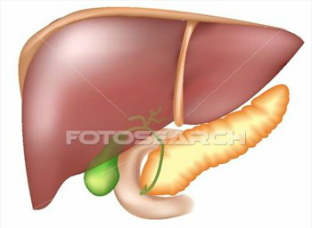| If the pancreas's beta cells are damaged or destroyed, then yes, diabetes can occur. It wouldn't quite be the same as Type 1, which is an autoimmune attack onto the pancreas, but the pancreas would become insulin deficient, much like it would for a Type 1. The person certainly wouldn't be a Type 2, which is characterized as insulin resistance. Beta cells have been known to regrow, but once the damage is done, it's probably done. A pancreatic transplant might work for a person who has diabetes from a damaged pancreas rather than an autoimmune disorder. | |

Pancreatic cancer is very dangerous since it rarely detected in its early stages and often comes with a very poor prognosis. Adding to the danger of this disease is the fact that pancreatic cancer tends to spread rapidly and the signs and symptoms aren’t always apparent until it’s too late.
TypesThere are two main types of pancreatic cancer, each of which is categorized by which cells the cancer originally forms in:
Causes And Risk FactorsPancreatic cancer is caused by a genetic mutation in the cells of the pancreas. The mutations allow the cells to divide and grow at unusually rapid rates. In addition, the mutations also allow the cells to stay alive under conditions where normal cells would die. Often, the accumulating cells will turn into a mass that forms a tumor.
There are several factors which can increase a person’s risk for pancreatic cancer, including:
TypesThere are two main types of pancreatic cancer, each of which is categorized by which cells the cancer originally forms in:
- Cancer formed in the pancreas ducts: The pancreas ducts are responsible for producing juices which help with digestion. When cancer first forms in the cells located in the ducts of the pancreas, this type of pancreatic cancer occurs. This type of cancer is also referred to as adenocarcinoma and accounts for most of the cases of pancreatic cancer.
- Cancer formed in the hormone-producing cells: When cancer first forms in the cells of the pancreas responsible for producing hormones, this type of cancer occurs. This type of cancer is also referred to as endocrine cancer and is much rarer than cancer which is formed in the pancreas ducts.
- Dark-colored urine
- Clay-colored stools
- Nausea
- Vomiting
- Loss of appetite
- Unintentional weight loss
- Jaundice (skin or eyes that become yellowish in color)
- Pain or discomfort in the upper abdomen
- Diarrhea
- Indigestion
- Back pain
- Blood clots
- Depression
Causes And Risk FactorsPancreatic cancer is caused by a genetic mutation in the cells of the pancreas. The mutations allow the cells to divide and grow at unusually rapid rates. In addition, the mutations also allow the cells to stay alive under conditions where normal cells would die. Often, the accumulating cells will turn into a mass that forms a tumor.
There are several factors which can increase a person’s risk for pancreatic cancer, including:
- Age: The older an individual is, the higher their risk for pancreatic cancer is. This is particularly true once a person surpasses the age of 60.
- Sex: Pancreatic cancer is slightly more common in women compared to men.
- Race: African-Americans are more likely to get pancreatic cancer than people of other races.
- Family history: Having a personal or family history of pancreatic cancer increases your risk for the disease. In addition, having a family history of certain genetic syndromes – including a BRCA2 gene mutation, Lynch syndrome and Peutz-Jeghers syndrome – increases a person’s risk for pancreatic cancer.
- Smoking: Smokers are more likely to get pancreatic cancer than non-smokers.
- Having certain health conditions: People with pancreatitis (chronic inflammation of the pancreas) or diabetes and those who are overweight or obese have a higher risk for pancreatic cancer.
- Quitting smoking
- Maintaining a healthy weight
- Eating a diet with lots of fruits, vegetables and whole grains
- Exercising regularly
- Surgery: When possible, doctors will try to remove as much of the cancer from the pancreas as possible. One common method for this is the Whipple procedure, which involves removing the head of the pancreas, a portion of the small intestine, the gallbladder and part of the bile duct. A distal pancreatectomy involves removing the tail of the pancreas. In either case, surgery always has a risk of bleeding or infection.
- Radiation therapy: With radiation therapy, high-energy beams are used to kill the cancer cells in the pancreas and other areas to which it has spread.
- Chemotherapy: Chemotherapy is the use of drugs to kill off cancer cells. The drugs are administered orally or intravenously.
- Clinical trials: Because pancreatic cancer is often accompanied by a poor prognosis, many people join clinical trials to explore new ways to treat their disease. This may involve taking a drug or even getting a experimental pancreatic cancer vaccine.

 RSS Feed
RSS Feed